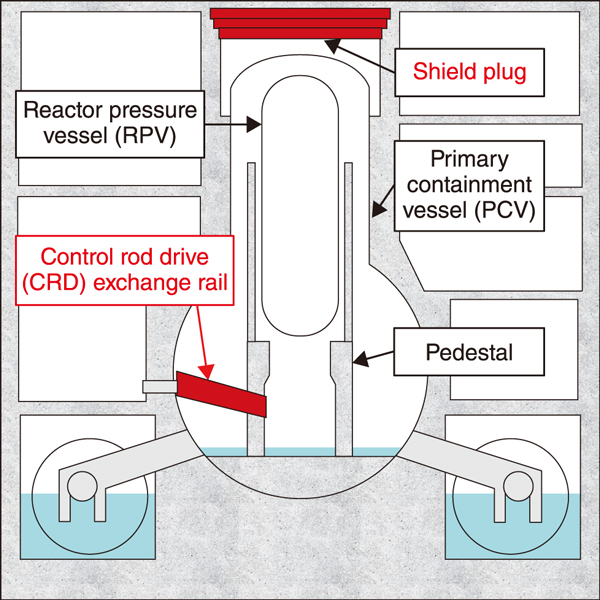
Fig.1 Control rod drive exchange rail and shield plug in TEPCO’s Fukushima Daiichi Nuclear Power Station (FDNPS) Unit-2 reactor building

Fig.2 Appearance of thermal insulation before and after the chemisorption test with Cs vapor
Table 1 Products of high-temperature reaction between the Cs hydroxide hydrate reagent and concrete

Since cesium (Cs) is the major gamma (γ)-ray source in the decommissioning of TEPCO’s Fukushima Daiichi Nuclear Power Station (FDNPS), information on properties such as the water solubility of the Cs remaining in the reactor buildings is important. According to the internal investigation of FDNPS Unit 2, the maximum absorbed dose near the control rod drive (CRD) exchange rail was 42 Gy/h, which was higher than the dose of 7 Gy/h inside the pedestal; the γ-ray dose on the surface of the shield plug was 6-11 mSv/h, which was unexpectedly higher than the value of 0.1 mSv/h to several millisievert per hour on the other floor surfaces at the time of the investigation (Fig.1). Therefore, we experimentally investigated the causes of each of these two unexpected events using Cs hydroxide (CsOH), a typical Cs compound formed during the accident.
With regard to the CRD exchange rail, we speculated that Cs in the gas phase might have chemisorbed on the calcium silicate thermal insulation (hereinafter referred to as thermal insulation) used in the piping system in the primary containment vessel and dropped onto the rail, thereby increasing the radiation dose. Then, using the same equipment that was used for the chemisorption experiments of CsOH vapor and steels, we investigated the thermal insulation in a temperature range of 600 ℃−800 ℃. Fig.2 shows an example of the results obtained at 800 ℃ where more clear chemisorption behavior is observed. The thermal insulation shrunk drastically, and its weight increased by 70%−80% after the chemisorption test. Then, the chemisorbed samples were immersed in pure water for 72 h to examine their water solubility. Water-soluble Cs silicate (Cs2SiO3) and water-insoluble Cs aluminosilicate (CsAlSiO4) were confirmed by inductively coupled plasma emission spectroscopy for elements eluted in water and by X-ray diffraction (XRD) analysis for the thermal insulation remaining after the immersion. Therefore, it is possible that the thermal insulation had shrunk and fallen onto the rail via Cs chemisorption, resulting in an unexpected increase in the radiation dose.
With regard to the shield plug, since Cs in the gas phase is considered to exist in the form of aerosol, a chemical reaction between Cs hydroxide hydrate (CsOH·H2O) reagent and concrete was investigated via thermogravimetric and differential thermal analyses and XRD analysis using their mixed powders. The results showed that water-soluble Cs carbonate hydrate (Cs2CO3(H2O)3) was formed even at room temperature and that water-insoluble CsAlSiO4 was formed at temperatures above 200 ℃ (Table 1). Therefore, we attributed the unexpected increase in radiation dose to the chemical reaction between Cs aerosol in the gas phase and concrete.
In the future, we plan to predict the properties of the Cs remaining in the reactor buildings and clarify the reaction rate and fraction of chemisorbed Cs compounds.
(Kunihisa Nakajima)